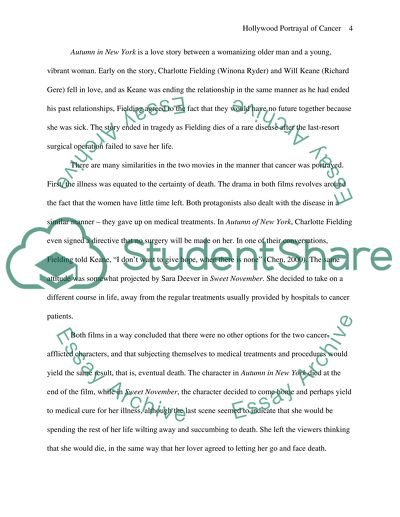Cite this document
(“Hollywood Portrayal of Cancer Essay Example | Topics and Well Written Essays - 1500 words”, n.d.)
Hollywood Portrayal of Cancer Essay Example | Topics and Well Written Essays - 1500 words. Retrieved from https://studentshare.org/miscellaneous/1512008-hollywood-portrayal-of-cancer
Hollywood Portrayal of Cancer Essay Example | Topics and Well Written Essays - 1500 words. Retrieved from https://studentshare.org/miscellaneous/1512008-hollywood-portrayal-of-cancer
(Hollywood Portrayal of Cancer Essay Example | Topics and Well Written Essays - 1500 Words)
Hollywood Portrayal of Cancer Essay Example | Topics and Well Written Essays - 1500 Words. https://studentshare.org/miscellaneous/1512008-hollywood-portrayal-of-cancer.
Hollywood Portrayal of Cancer Essay Example | Topics and Well Written Essays - 1500 Words. https://studentshare.org/miscellaneous/1512008-hollywood-portrayal-of-cancer.
“Hollywood Portrayal of Cancer Essay Example | Topics and Well Written Essays - 1500 Words”, n.d. https://studentshare.org/miscellaneous/1512008-hollywood-portrayal-of-cancer.


